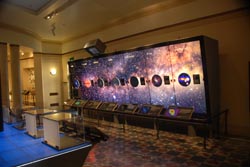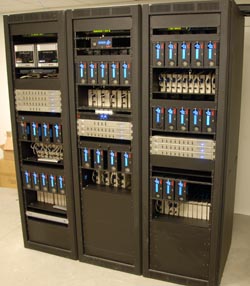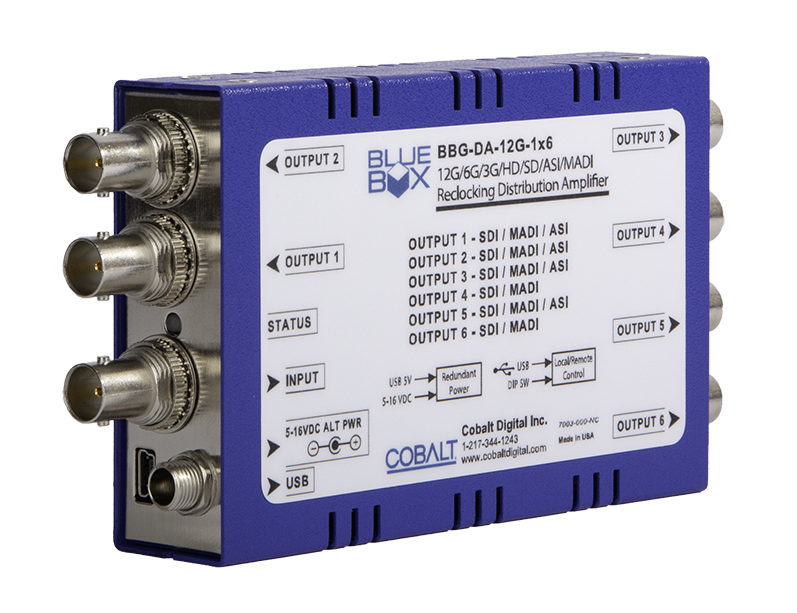Star Treatment

- ORANGE, CA-Opened on May 14, 1935, the Griffith Observatory was used continuously for 66 years and hosted nearly 70 million visitors, with millions more visiting the location without entering the building. In 2002 the observatory shut down for its first-ever significant capital improvements. In order to properly serve the two million people who visit each year, a lengthy renovation project was developed, and the observatory will reopen in its new glory later this year.
The Griffith Observatory in Los Angeles reopens later this year after a four-year renovation that included an AV overhaul by Mad Systems. Precise integration of the mechanical and electronic elements keep exhibits synchronized, through the use of encoders that communicate with the computer control system.
To restore the audio and video systems of the observatory and improve them for the current level of public use, Mad Systems of Orange, CA was brought in as part of a distinguished creative team to implement the massive, $93 million expansion and renovation. The team included C&G Partners of New York for concept and design development for the exhibit program, and Maltbie of Mount Laurel, NJ as exhibit fabricator and installer. The project architects were Pfeiffer Partners and Levin & Associates Architects, both of Los Angeles.
Mad Systems designed and provided all audiovisual and technical systems, and was able to highlight its unique set of in-house skills.

With a vast amount of equipment involved to run all the AV systems in the observatory, Mad Systems managed to use just four racks, which are also built by Mad Systems. Everything is on a PC platform.
In one such exhibit, Mad Systems custom-designed and built several orreries (mechanical models of the planetary system) with internal motor controls to make them revolve and reflect such phenomena as the phases of the moon, tides, eclipses and seasonal rotation. These devices operate in concert with a video display of the different principles that they are designed to display. Precise integration of the mechanical and electronic elements keep them synchronized, through the use of encoders that communicate with the computer control system. The video and the orreries remain in step whatever the speed.
With a vast amount of equipment involved to run all the AV systems in the observatory, Mad Systems managed to use just four racks, which are also built by Mad Systems. The rack systems are easily comprehended, fully tested, durable, compact, and configured for simple operation and maintenance. Members of the staff don't need to be tech wizards to do what they need to do using the racks. Everything is on a PC platform.
To help make the racks as compact and efficient as possible, Mad Systems developed and built its own computer and server hardware. "We've been able to take the resolution to high-definition for all the exhibits, which creates a much nicer-looking and more future-proof solution for them," said Ensing. This was the first large-scale deployment of its Mad SNAP server, and Mad Systems now has several other installs where these servers are heavily relied upon.
The multitasking video server/show controller, developed in-house by Mad Systems for interactive exhibits, kiosks, object theaters, video theaters, window displays, and point-of-purchase, is Windows PC-based and simultaneously handles media playback and a full range of show devices through a central interface, eliminating the need for multiple programming and control systems. Video, audio, lighting, LED messages, captioning/subtitling, and effects all connect directly to one little black box. It can be controlled via network protocol or keyboard commands. Commands and updates (and diagnostics) can be done remotely, via network (LAN or VPN). At the observatory, several Mad SNAPs are installed in a series of interactive "Magic Box" object theaters, and in the orrery exhibits.
Using Windows PC-based systems linked on a secure network, the entire technical operation can be monitored, upgraded, and maintained remotely. This includes computer systems, video playback, lighting and sound, and all other linked operations. "We can actually get into that system from our office, and look at what all the different screens are doing," Ensing explained. "We can see what's on the screens at the planetarium from our office. We can control them, test them, and update them from here. We can remote-diagnose and remote-monitor; it helps us in putting a better system together."
A daily selection of the top stories for AV integrators, resellers and consultants. Sign up below.
